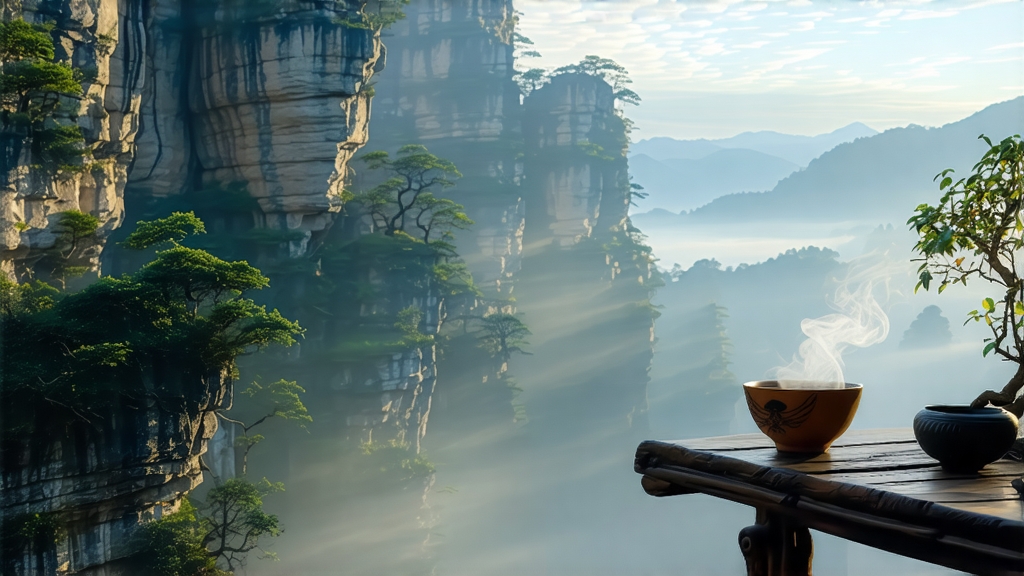
High on the fog-laced ridges of northern Guangdong’s Wuyi Mountains, where granite crags breathe mineral-rich air into every dawn, grows a tea that Chinese poets once likened to “bottled music.” Locals simply call it Dancong—“single bush”—yet among the hundreds of genetically distinct shrubs that have evolved over nine centuries, one cultivar has earned the reverent name Phoenix Dancong. Unlike the garden-style hedges of modern plantations, these trees stand free, often topping four meters, their gnarled trunks wrapped in emerald lichen and their roots diving through cracks into subterranean streams. Every April, when the mountain mist lingers until noon, villagers climb bamboo ladders to coax the first two leaves and a bud from branches that remember Ming-dynasty monks. What follows is a slow transformation that turns fresh rain-washed leaf into one of the most perfumed, layered, and intellectually captivating oolongs on earth.
The story begins during the Southern Song period (1127-1279), when retreating scholars settled among the She ethnic villages and began selecting wild tea trees whose natural fragrance reminded them of flowers blooming in the valley. Over generations they propagated only the most aromatic individuals by seed, creating what biologists now recognize as a living germplasm bank of more than eighty aroma types. Imperial tribute records from 1382 list “Fenghuang Shuixian” as the court’s spring beverage, shipped north in small bamboo-lined crates cushioned with rice straw. Caravan drivers claimed the tea arrived still warm from the charcoal finish, its scent so potent that horses snorted in approval. By the late Qing, European traders stationed at Canton tasted samples spirited out through the port of Shantou and labeled the liquor “Chinese Alpine Perfume,” a name that survives in vintage tea-tin lithography today.
Phoenix Dancong is not a single recipe but an entire aromatic spectrum. Gardeners classify the bushes by their dominant fragrance: honey-orchid (Mi Lan Xiang), gardenia (Huang Zhi Xiang), almond (Xing Ren Xiang), ginger flower (Jiang Hua Xiang), and the elusive night-blooming jasmine (Mo Li Xiang). Each type is tied to a specific micro-valley where altitude, diurnal temperature swing, and mineral soil composition imprint a unique terroir signature. The highest plots, above 800 m and often reachable only on foot, yield what locals term “mountain field charm” (shan chang wei)—a cooling menthol finish that echoes the breeze sweeping through fir forests. Lower elevations produce sweeter, broader liquors, yet connoisseurs prize the high-cliff material for its ability to steep eight or nine times without collapsing into flat sweetness.
Harvest starts at Qingming festival when the leaf’s moisture content hovers around 75 %. Pickers work in pairs, one steadying the ladder while the other plucks with a flicking motion that keeps the tiny hairs on the leaf surface intact. Baskets are woven from thin bamboo strips to prevent bruising; leaves must arrive at the village workshop within two hours before enzymatic oxidation races ahead of the craftsman’s rhythm. There, the first of five intricate stages—sun withering—begins on raised bamboo racks angled toward the morning sun. For exactly twenty-two minutes the leaves bask, turning every three minutes so that ultraviolet light begins breaking down grassy compounds and releasing floral precursors. Cloud cover is watched with the same anxiety a Burgundian vigneron reserves for hail; too little sun and the base remains herbaceous, too much and the leaf sugars caramelize prematurely.
The second stage, indoor withering, is where Phoenix Dancong parts company with greener oolongs such as Tie Guan Yin. Leaves are laid on round rattan trays stacked inside a mud-brick room heated only by the breath of the mountains. Over six hours the leaf loses another 10 % moisture while enzymes convert lipids into volatile terpenes responsible for the tea’s signature honeysuckle note. Every forty minutes the tea master lifts a tray shoulder-high and lets the leaves tumble back, a gentle bruising that encourages edge-oxidation without the maceration seen in black teas. Aroma is the clock here: when the air smells like warm apricot, it is time to move to shaking.
Shaking, or yaoqing, happens at night when mountain humidity rises. Thirty layers of leaves are placed into a bamboo drum mounted on a wooden seesaw; ten minutes of rhythmic